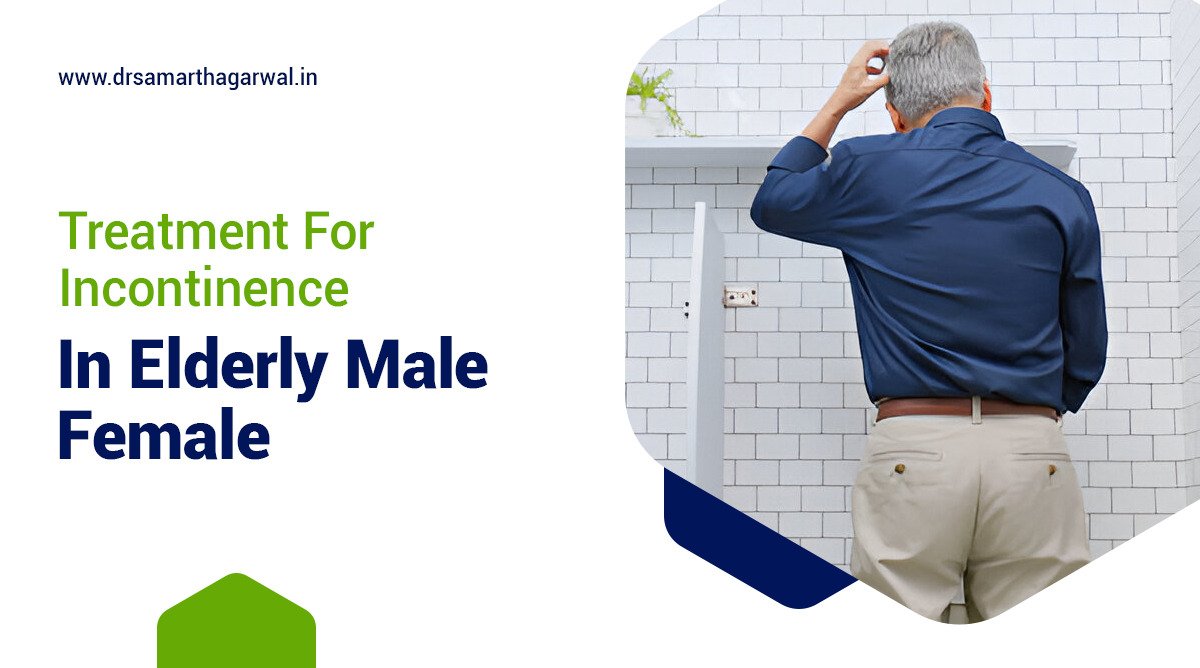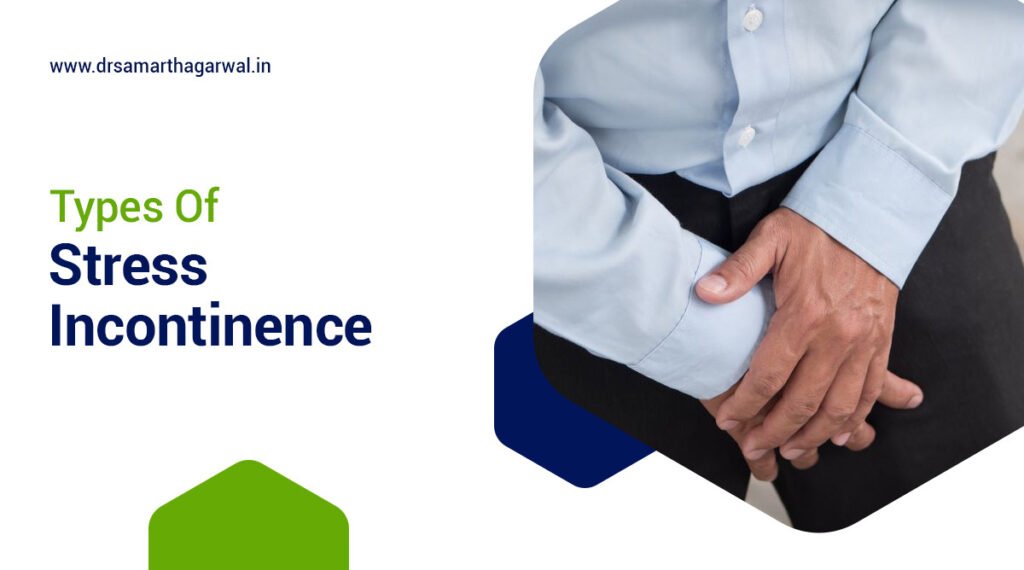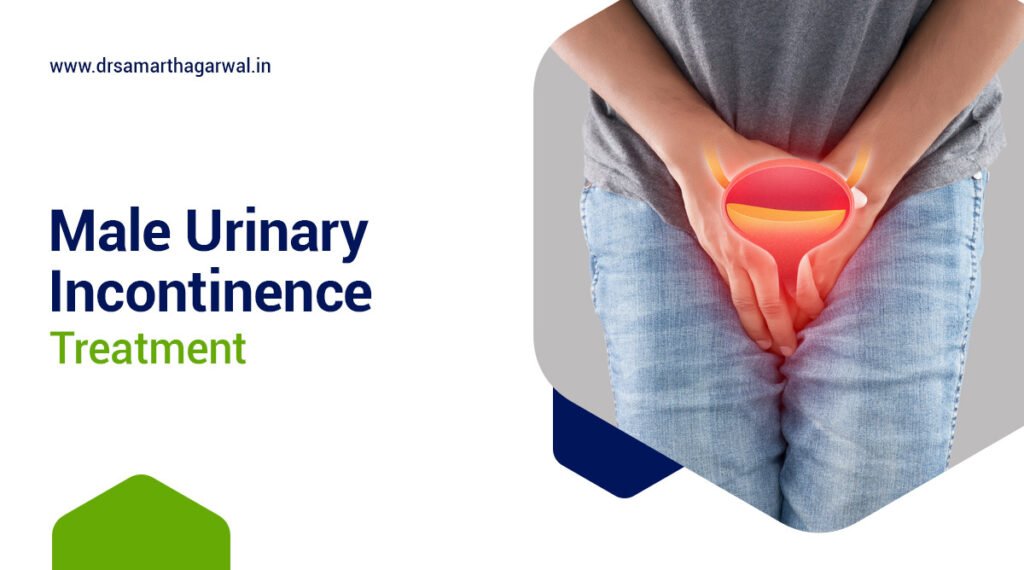Urinary incontinence is a common and often debilitating condition that affects millions of older adults worldwide. In the elderly population, the prevalence of urinary incontinence is significantly higher.
Urinary Incontinence (UI) is more prevalent in older men than in younger men, with estimates ranging between 21% and 32% in those aged 65 and above. According to Olagundoye, O. et al.’s 2023 scoping review, “A scoping review of risk factors for urinary incontinence in older men,” UI is commonly under-reported and under-treated in older men, with calls for more targeted research focusing on this specific group.
And as per another study by Nitti, Victor W.’s 2001 article “The Prevalence of Urinary Incontinence” in Reviews in Urology, the prevalence of incontinence is relatively low early in life for women but peaks around menopause and then increases steadily between the ages of 60 and 80 years.
Addressing incontinence in older adults is crucial, not only to improve their quality of life but also to prevent associated complications such as skin irritation, infections, and falls.
Furthermore, untreated incontinence can lead to social isolation, depression, and anxiety, emphasizing the need for healthcare providers to prioritize its assessment and management in older adult care.
By acknowledging the prevalence and impact of urinary incontinence in older adults, we can work towards developing effective treatment strategies and improving overall health outcomes for this vulnerable population.
Types of Urinary Incontinence
Stress Incontinence
Stress incontinence is a common type of urinary incontinence in the elderly, characterized by the involuntary leakage of urine during physical activities that increase abdominal pressure, such as coughing, sneezing, or lifting.
Weakened pelvic floor muscles are a primary cause of stress incontinence in the elderly.
As we age, the muscles that support the bladder and urethra can become weakened, leading to a loss of bladder control. This can be due to a combination of factors, including hormonal changes, childbirth, and prolonged periods of inactivity.
Symptoms of stress incontinence may include leakage of urine during physical activity, frequent urination, and a sudden, intense need to urinate. Diagnosis typically involves a physical exam, medical history, and urinalysis to rule out other underlying conditions.
Urge Incontinence
Urge incontinence, also known as overactive bladder, is a type of urinary incontinence that affects many elderly individuals. It is characterized by a sudden, intense need to urinate, often accompanied by involuntary leakage of urine.
Overactive bladder is the primary cause of urge incontinence, resulting from abnormal contractions of the bladder muscle.
This can be triggered by a variety of factors, including age-related changes, neurological disorders, and certain medications. Symptoms of urge incontinence may include frequent urination, nocturia (waking up at night to urinate), and leakage of urine before reaching the bathroom. Diagnosis typically involves a physical exam, medical history, and urinalysis to rule out other underlying conditions.
Overflow Incontinence
Overflow incontinence is a type of urinary incontinence that occurs when the bladder is unable to empty properly, leading to a constant dripping or leakage of urine. This type of incontinence is common in elderly individuals, particularly those with underlying medical conditions.
Urinary retention and prostate issues are common causes of overflow incontinence in the elderly. When the bladder is unable to empty completely, urine can accumulate and put pressure on the bladder walls, leading to leakage. Prostate issues, such as an enlarged prostate, can also obstruct the flow of urine, causing overflow incontinence.
Symptoms may include a slow or weak urine stream, frequent urination, and leakage of urine. Diagnosis typically involves a physical exam, medical history, and urinalysis to rule out other underlying conditions.
Functional Incontinence
Functional incontinence is a type of urinary incontinence that occurs when an individual is unable to reach the bathroom in time due to physical limitations or mobility issues. This type of incontinence is common in elderly individuals who may have difficulty walking, transferring, or using the bathroom due to age-related physical changes.
Mobility and dexterity issues, such as arthritis, stroke, or Parkinson’s disease, can contribute to functional incontinence. When an individual has difficulty moving quickly or safely to the bathroom, they may experience leakage or accidents. Symptoms may include difficulty walking to the bathroom, needing assistance with toileting, and leakage of urine.
Diagnosis typically involves a physical exam, medical history, and assessment of mobility and cognitive function to identify underlying causes and develop strategies for improvement.
Mixed Incontinence
Mixed incontinence is a type of urinary incontinence that combines symptoms of both stress and urge incontinence. This type of incontinence is common in elderly individuals, as age-related changes can contribute to both stress and urge incontinence.
Mixed incontinence occurs when an individual experiences both the involuntary leakage of urine during physical activities (stress incontinence) and the sudden, intense need to urinate (urge incontinence).
Symptoms may include leakage of urine during coughing, sneezing, or lifting, as well as frequent urination, nocturia, and urgency. Diagnosis typically involves a physical exam, medical history, and urinalysis to rule out other underlying conditions, as well as a bladder diary to track symptoms and identify patterns.
Assessment and Diagnosis of Urinary Incontinence in elderly
Urinary incontinence in the elderly requires a comprehensive assessment and diagnosis to determine the underlying cause and develop an effective treatment plan. A thorough evaluation involves a combination of clinical guidelines, assessment tools, medical evaluation, physical examination, and diagnostic tests.
In the following sections, we will explore the standard clinical guidelines for incontinence in the elderly, the use of assessment tools, and the various components of the diagnostic process, including medical evaluation, physical examination, urodynamic testing, imaging studies, patient history, medication review, and lifestyle and hygiene habits.
By understanding these essential steps, healthcare providers can accurately diagnose and manage urinary incontinence in elderly individuals, improving their quality of life and overall well-being.
Clinical Guidelines for Incontinence in Elderly
Clinical guidelines for incontinence in the elderly provide a framework for healthcare providers to assess and diagnose urinary incontinence in this population. These guidelines ensure that elderly individuals receive comprehensive and standardized care, regardless of their healthcare access or insurance coverage.
Standard clinical guidelines for incontinence in the elderly recommend a multidisciplinary approach, incorporating telemedicine, outpatient services, and inpatient care as needed. A physician consultation is essential to develop a personalized treatment plan, taking into account the individual’s medical history, lifestyle, and preferences.
Use of assessment tools, such as questionnaires and symptom diaries, helps healthcare providers identify the underlying causes of incontinence and monitor treatment effectiveness. By following these guidelines, healthcare providers can deliver high-quality, patient-centered care to elderly individuals with urinary incontinence.
Medical Evaluation for Incontinence in Elderly
A medical evaluation is a crucial component of assessing and diagnosing urinary incontinence in elderly individuals. This comprehensive evaluation helps healthcare providers identify the underlying causes of incontinence and develop an effective treatment plan.
A physical examination is a fundamental aspect of the medical evaluation, providing valuable insights into the individual’s overall health and potential contributing factors to incontinence. Urodynamic testing and imaging studies may also be necessary to assess bladder function and rule out underlying conditions.
These assessments, combined with the use of standardized assessment tools and adherence to clinical guidelines, enable healthcare providers to offer personalized care and evidence-based treatment options.
By leveraging medical interventions and nursing interventions, healthcare providers can improve treatment outcomes and enhance the quality of life for elderly individuals with urinary incontinence.
Patient History for Incontinence in Elderly
A thorough patient history is essential in assessing and diagnosing urinary incontinence in elderly individuals. Understanding the patient’s medical history, lifestyle, and habits helps healthcare providers identify underlying causes and develop an effective treatment plan.
A comprehensive patient history includes a medication review to identify potential contributors to incontinence, as well as an assessment of lifestyle and hygiene habits. This information helps healthcare providers understand the patient’s experience with incontinence, including the social stigma and psychological impact, and develop a personalized care plan.
By considering the patient’s chronic condition, symptom management, and geriatric care needs, healthcare providers can implement preventive measures, promote compliance, and ensure follow-up care to enhance resilience and functional independence.
Medical Interventions
Effective management of urinary incontinence in the elderly often requires medical interventions. These interventions can include medications to address underlying causes, such as overactive bladder or prostate issues, as well as surgical options to restore bladder control. The following sections will explore the various medical interventions available, including medications, surgical procedures, and innovative solutions to improve bladder function and quality of life.
Medications
Medications such as anticholinergics for overactive bladder, alpha blockers for prostate issues, and estrogen therapy for post-menopausal women are effective in managing incontinence symptoms. Anticholinergics help relax the bladder muscle, reducing urgency and frequency, while alpha blockers improve prostate health by relaxing the muscles around the prostate. Estrogen therapy alleviates post-menopausal symptoms, promoting bladder health.
Surgical Options
Surgical options like bladder sling procedures, artificial urinary sphincter, and prostate surgery (TURP) offer solutions for severe cases. Bladder sling procedures support the bladder, while artificial urinary sphincter devices control urine flow. Prostate surgery (TURP) addresses prostate issues, improving urine flow and reducing incontinence.
These medical interventions, combined with diet management, prevention of urinary tract infections, and management of constipation, promote self-management and reduce nursing care needs. Health education on prostate health, menopause, and incontinence management empowers elderly individuals to take control of their condition.
You might also like: Types of Stress incontinence
Nursing Interventions Urinary Incontinence in elderly
Nursing interventions for urinary incontinence in elderly males and females focus on promoting functional independence, improving quality of life, and enhancing continence management.
Continence Management
Continence management involves the role of nurses in providing patient education and support, empowering elderly individuals to manage their urinary symptoms effectively. Nurses play a crucial role in promoting compliance, follow-up care, and resilience, ensuring that patients receive comprehensive care.
Bladder Training Programs
Bladder training programs are essential in managing urinary incontinence, involving techniques for bladder retraining, monitoring, and adjusting the program as needed. These programs help elderly individuals develop control over their bladder, reducing urinary symptoms and improving functional independence.
Pelvic Floor Muscle Training
Pelvic floor muscle training is a vital component of nursing interventions, emphasizing the importance of Kegel exercises, biofeedback, and electrical stimulation. These techniques help strengthen pelvic floor muscles, improving bladder control and reducing urinary incontinence. By incorporating holistic approaches and evidence-based practices, nurses can promote long-term care, rehabilitation, and quality improvement for elderly individuals with urinary incontinence.
Urinary Incontinence Exercises for Males
Lifestyle and Behavioral Therapies
Lifestyle and behavioral therapies are essential components of treating urinary incontinence in elderly males and females, focusing on diet and hydration management, urination schedules, and physical therapy to promote continence and improve quality of life.
Diet and Hydration Management
Diet and hydration management involve identifying foods and drinks to avoid, such as caffeine and spicy foods, and emphasizing the importance of proper hydration to prevent urinary tract infections and maintain healthy urinary habits. A well-balanced diet and adequate hydration can significantly impact continence programs and overall patient care.
Urination Schedule
Establishing a urination schedule through timed voiding and double voiding techniques can help elderly individuals manage their bladder and reduce incontinence episodes. This behavioral therapy promotes patient advocacy, health literacy, and social support, empowering individuals to take control of their urinary health.
Physical Therapy
Physical therapy, including strengthening the pelvic floor and mobility enhancement exercises, is a crucial aspect of lifestyle and behavioral therapies. Pelvic floor exercises, such as Kegel exercises, can improve bladder control, while mobility aids and exercises can enhance overall physical function and reduce the risk of falls and injuries. By incorporating these therapies into continence programs, healthcare providers can promote comprehensive care and improve treatment outcomes for elderly individuals with urinary incontinence.
Use of Assistive Devices and Absorbent Products
The use of assistive devices and absorbent products is a crucial aspect of managing urinary incontinence in elderly males and females, providing a sense of security and confidence in daily life.
Absorbent Products
Absorbent products, such as adult diapers, pads, and protective underwear, offer a discreet and effective solution for managing incontinence. These products can be used in conjunction with lifestyle changes, such as medication adherence and lifestyle intervention, to reduce the risk of urinary tract infections and promote overall pelvic health.
Catheterization
Catheterization may be necessary for some elderly individuals, and understanding when and how to use catheters is essential. While catheterization carries risks and benefits, it can be an effective management strategy for urinary incontinence, particularly in cases of underactive bladder or severe incontinence. Pelvic health specialists can provide guidance on catheterization and other assistive devices.
Other Assistive Devices
Additional assistive devices, such as toileting aids and bedside commodes, can greatly impact the lives of elderly individuals with urinary incontinence. These devices can promote independence, reduce the risk of falls and injuries, and enhance overall quality of life. By incorporating assistive devices and absorbent products into treatment plans, healthcare providers can offer comprehensive care and support for elderly individuals with urinary incontinence.
Psychological and Emotional Support
Psychological and emotional support is a vital component of treating urinary incontinence in elderly males and females, addressing the emotional and social impacts of incontinence and promoting overall well-being.
Patient Education
Patient education is essential in helping elderly individuals understand and manage their incontinence. Informing patients about incontinence, its causes, and treatment options empowers them to take control of their condition. Additionally, coping strategies and stress management techniques can help individuals deal with the emotional and psychological aspects of incontinence, improving their quality of life.
Support Groups and Community Resources
Support groups and community resources offer a sense of community and connection for elderly individuals with urinary incontinence. Finding local support groups and utilizing community resources can provide emotional support, reduce feelings of isolation, and promote overall well-being. These resources can also offer valuable information and guidance on managing incontinence.
Telehealth and Remote Monitoring
Telehealth and remote monitoring have revolutionized the management of urinary incontinence, enabling healthcare providers to offer continuous support and monitoring. The benefits of telehealth for continence management include increased accessibility, convenience, and personalized care. Setting up telehealth services can be a straightforward process, and healthcare providers can offer guidance and support to ensure a smooth transition.
Urinary incontinence is a common and treatable condition affecting elderly males and females, impacting their quality of life and independence. This blog has explored the various types of urinary incontinence, assessment and diagnosis, medical interventions, nursing interventions, use of assistive devices, and psychological support.
By understanding the complexities of urinary incontinence and the range of treatment options available, healthcare providers can offer personalized care and support to elderly individuals, promoting dignity, confidence, and overall well-being. With the right approach, elderly males and females can manage their urinary incontinence effectively, leading to improved health outcomes and a better quality of life.

For urinary incontinence treatment in Siliguri, please contact Dr. Samarth Agarwal.






